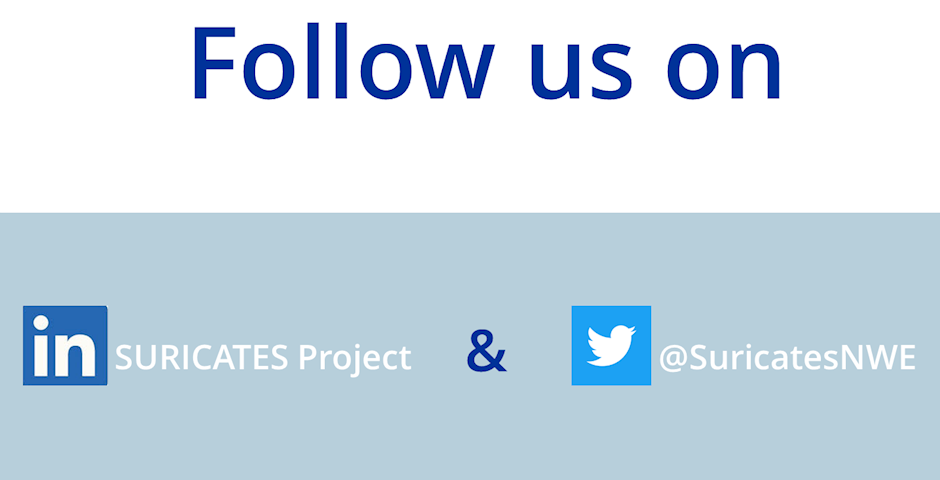Project Summary
The project aim is to increase sediment reuse for erosion and flood protection. We will provide authorities, port and waterway managers and erosion experts with new large scale solutions for sediment reuse in NWE ports, waterways and coastlines.
Climate change, erosion and flood risk increase require greater mitigation measures, consuming high volumes of natural resources. However, dredged sediments are a problem for EU ports/waterways providing navigation access with 200 million m3/y (80 million tonnes dry weight) generated. Increased social and environmental pressures show the critical need for new solutions to maintain and develop activity. Currently, more than 99% of EU marine sediment dredged is dumped at sea/managed as waste, with only 1% (800 000 t/year) reused. In SURICATES, 220 000t of sediment will be used in 4 new solutions as raw material to build resilient flood/erosion protection systems. We target an increase in the number of sediment reuse projects in NWE to drive sediment reuse to 1.3 Mt/y after 5 years, and 2.3Mt/y after 10 years in the EU. From the CEAMaS project national/global potential interest in reuse strategies demonstration, we will provide support for erosion/flood risk market development with local impact optimisation of sediment reuse. We will implement tools and methods for global impact quantification at regional scale using social, economic, employment and environmental modelling and we will test eco-innovative techniques in real-life conditions providing long term impact evaluation and guidelines for replication: riverbank strengthening, regeneration of harbour/river banks and beach nourishment.
Pilot implementation with long term impacts on territories is planned within the project for UK and NL. Networking activities for dissemination and operational guidance illustrated by 3 new projects for Fr, UK and IE will be developed and shared with local, national and EU authorities for implementation on project completion.

